AS A WRITER and field naturalist, I have an unofficial policy on love: I avoid using the word in print. Oh, sure, I profess love for my family and my most cherished of friends. But in essays about nature, I find “love” to be hollow and cheap.
Unlike some other languages, English offers us few verbs for expressing a deep and abiding affection or reverence short of the love we reserve for certain people. I might easily say or write that I love date bars or Beethoven or rainbows, but not in the same way that I love the enduring souls in my life. Any of us might love our local coffee joint or a painting in our home, but we’d probably get by okay were either of them gone forever.
Which brings me to my relationship with Bloodroot (Sanguinaria canadensis). It’s complicated.
What began decades ago as a passing fancy grew into an innocent crush, which later blossomed into a genuine fondness, after which came outright adoration. Longing and devotion crept into the relationship. And then euphoria. So now — I don’t know any other way to put it: I think I’m in love with Bloodroot … maybe more than anything else in nature.
So like a confused teen-ager or besotted adult, I’m trying to make some sense of this. And when I need to make sense of things, I usually walk, think, read, and write. Mostly I write. So here, in writing, are the reasons I think I love Bloodroot:
First is intrinsic beauty. I like the looks of this plant — the simplicity of its single, broad leaf and lone flower bearing those pearly, elegant petals — usually eight petals, alternating nicely in length and subtly in shape (the left image below). But not always eight petals or such elegance. Bloodroot is unpredictable and sometimes messy. Loving relationships can be like that.
That we are drawn to flowers is incontrovertible. Why we’re drawn to flowers is another matter. All sorts of research suggests that early humans associated flowers with survival. No, we didn’t necessarily eat them. But long before pharmacies and supermarkets came on the scene, flowers might have alerted our ancestors to the onset of a season of fertility — and opportunities for plant medicines or fruits.
Maybe I buy that. More than anything, I think we like flowers because they’re beautiful. And that’s enough for me. We give each other flowers when we’re sick or when we hurt or have suffered loss. Flowers make us feel better — especially when we’re with them in wild places. When I see it in the woods, Bloodroot makes me feel good, even euphoric. Like seeing someone I love.
Next is timing. Bloodroot is happening now. It is among a suite of plants, some of which we call “ephemerals,” that go about their business of reproduction in the naked woods of early spring. Before the trees leaf out, Bloodroot announces that the forest is about to resurrect itself, to breathe again, to release its snails and smells and spores and everything else it held in trust for us through winter. What’s not to love about that?
And then there are Bloodroot’s dispositions. It’s got plenty of them. Audacity is one. This flower dares to show itself when a late snowfall might put an end to its vernal ambitions. But not too much audacity. Bloodroot’s not reckless, after all. For good reason, it can come across as: wary, cute, dorky, artsy, coy, or simply magnificent. (Click through the gallery for better views.)
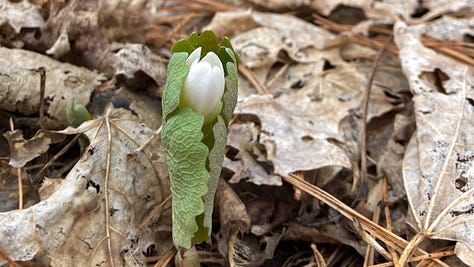
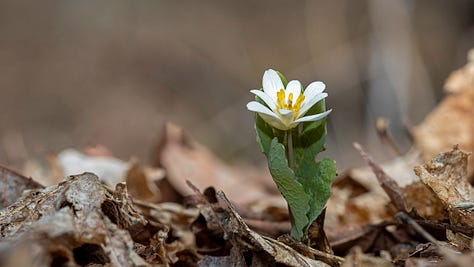
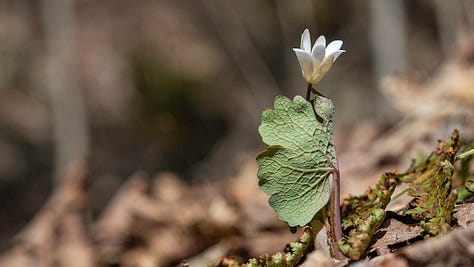
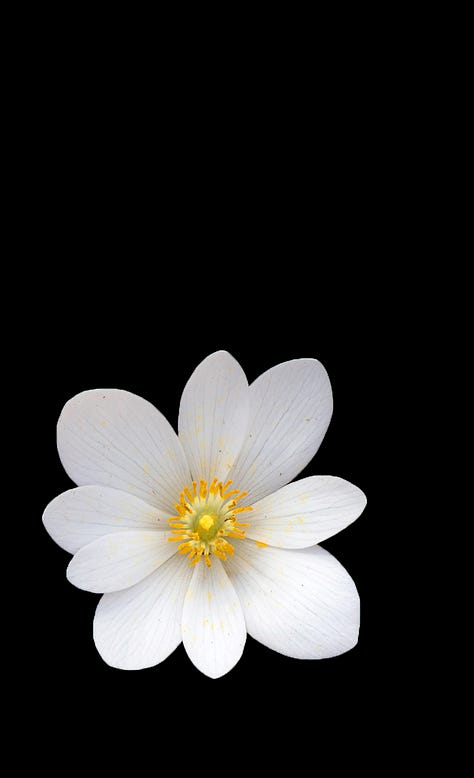

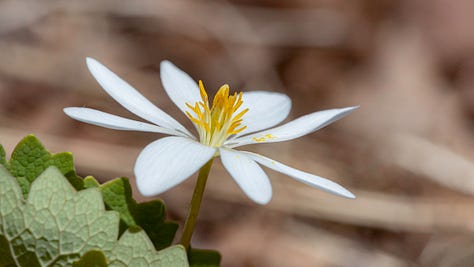
Granted, I’m anthropomorphizing, which is not only bad science but in the Anthropocene probably an insult to Bloodroot. Then again, we’re human: insults happen — even in loving relationships.
And finally, I think I love Bloodroot for its impermanence. I have this saying — I guess it’s a mantra: “Just get to the Bloodroot.” When I’m scared, whenever the future seems uncertain, I often say to myself: at least let me stick around long enough for the Bloodroot. After my own brush with death six years ago, during the pandemic, and even as I try to make sense of wars and hatred and injustice, a flower in the woods is a destination. It offers me respite — even equanimity. Just get to the Bloodroot.
And we’ve made it. The first of many Bloodroots emerged a couple weeks ago in the woods behind our home. I’ve visited with it and its relatives every day since. But here’s the catch: In some ways this relationship is kind of a spring fling. Any one Bloodroot plant will bloom for only a week or so. Then it’s done. If rain or snow or time knock those petals to earth, there’s no flower in waiting with petals to take their place. By May around here, the Bloodroot show is mostly over.
So even as this annual rendezvous with a plant seems like it’s only just begun, I also know that every day it is slipping away. Bloodroot reminds me that nothing lasts forever, and that I can be present — here, now.
So is this love? Can I use the word?
A plant will not fix the world or put an end to my doubt and dread. And I don’t believe we humans, who’ve made such a mess of things, will find our salvation solely in knowledge or intelligence or what passes as our politics. Equanimity comes from within — and from what’s genuine and worthy in the world: people, art, literature, poetry, justice, nature.
And in case you hadn’t noticed, it’s spring. If Bloodroot isn’t your thing, the salamanders are gettin’ it on in vernal pools. The songbirds are flying north. And the azure butterflies are twinkling at our feet.
All good stuff. But for me, here, now, or at any time of year, whether I see it or not, Bloodroot is refuge, a singular force of nature — like gravity or faith or reverence.
Or maybe like love.
Postscripts
Bloodroot, in the poppy family (Papaveraceae), is named for the reddish sap that oozes from most of its tissue, especially the rhizomes and roots. It contains isoquinoline alkaloids, a class of chemicals that have varied roles in plant defenses and in human cultures. I could have written volumes about this plant’s ecology, not the least of which would be its seeds being carted around and transplanted by ants.
Mary Predny and James Chamberlain compiled a nice life summary and annotated bibliography of Bloodroot in 2005. It’s a PDF published by US Forest Service.
The amazing iNaturalist has more than 65,000 records of Bloodroot from its native range, which is largely the eastern United States and bordering Canada. Here’s a map.

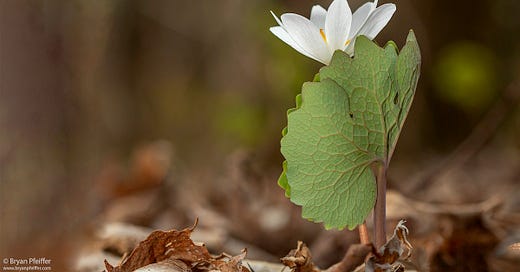


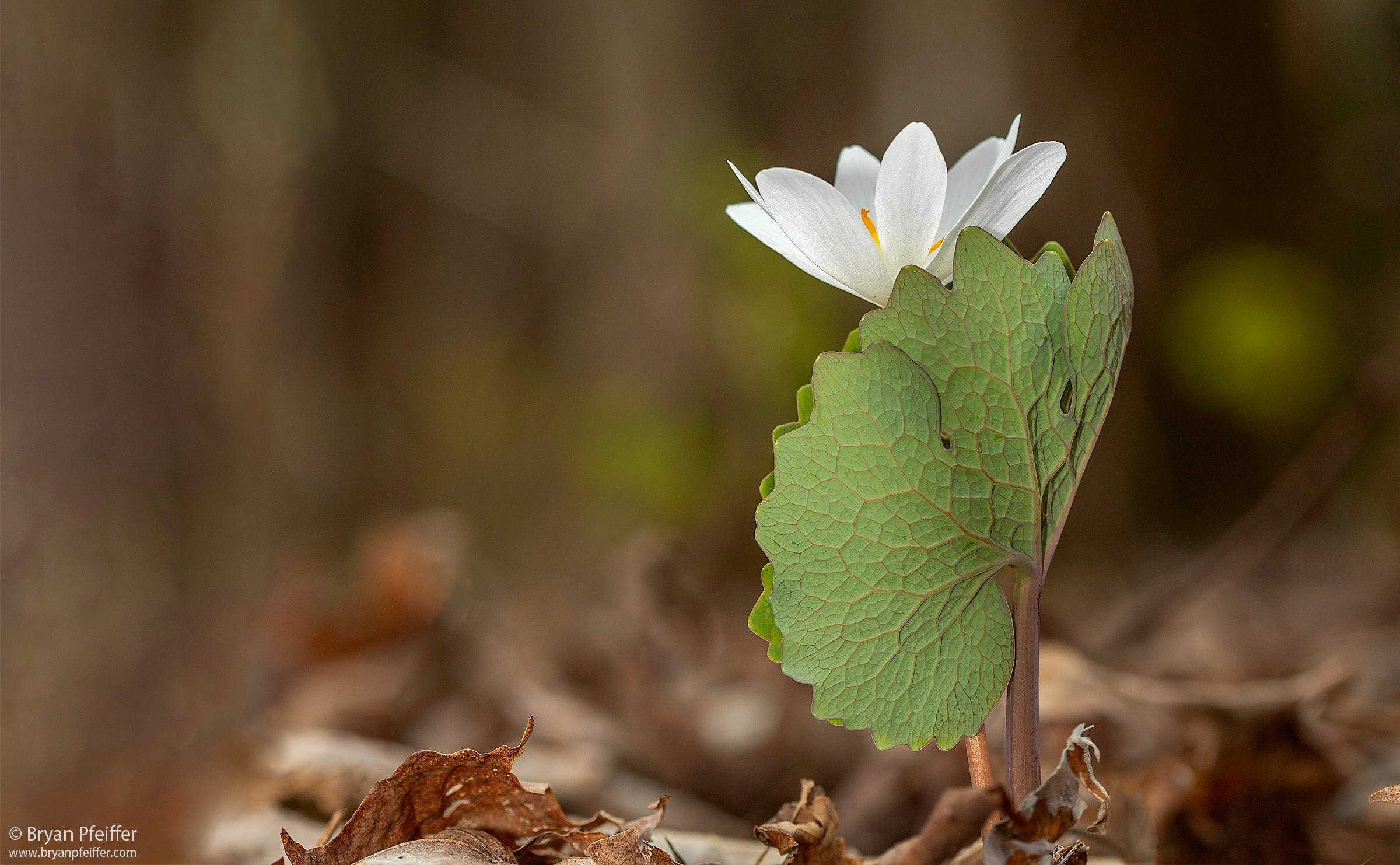
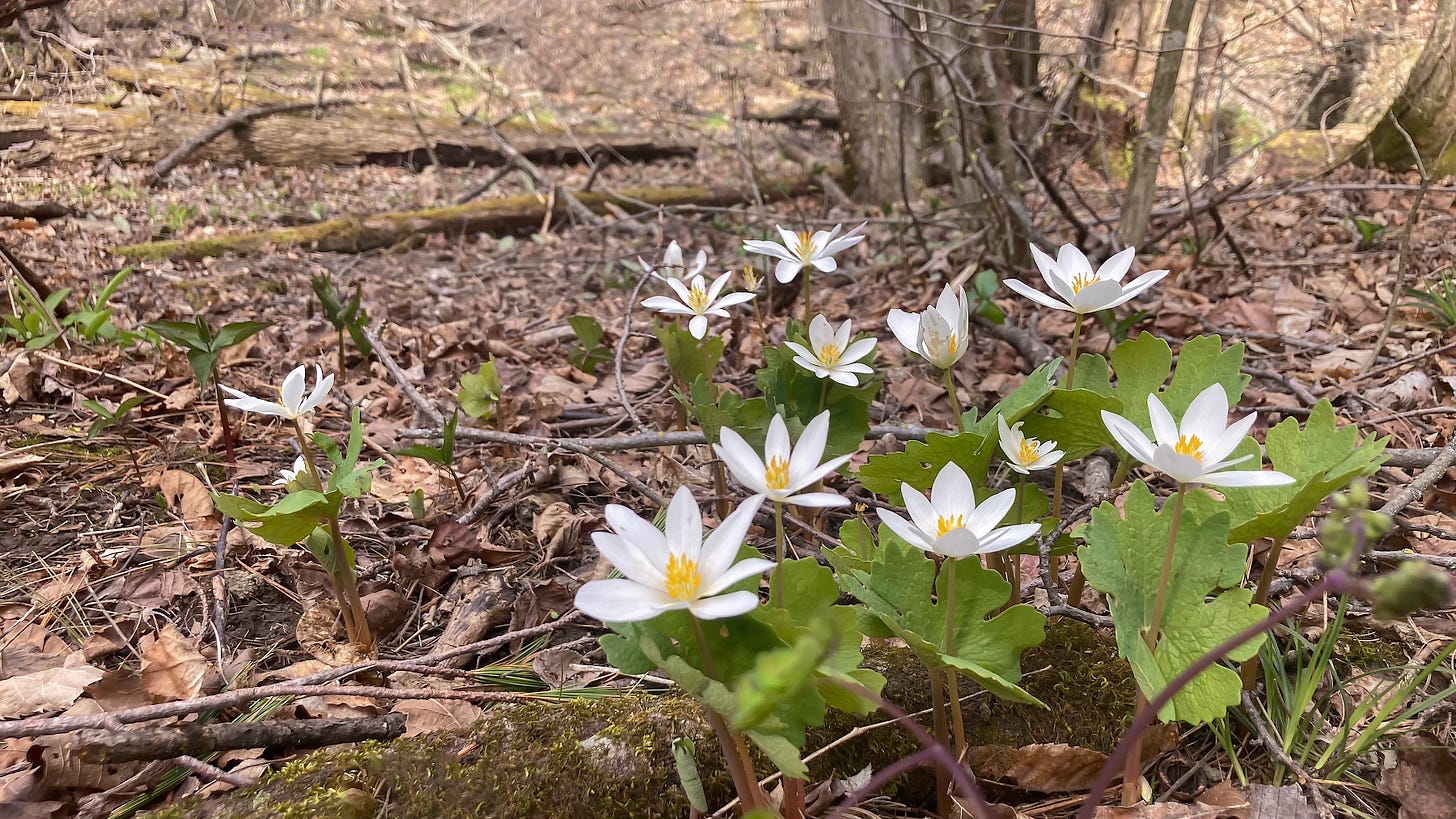
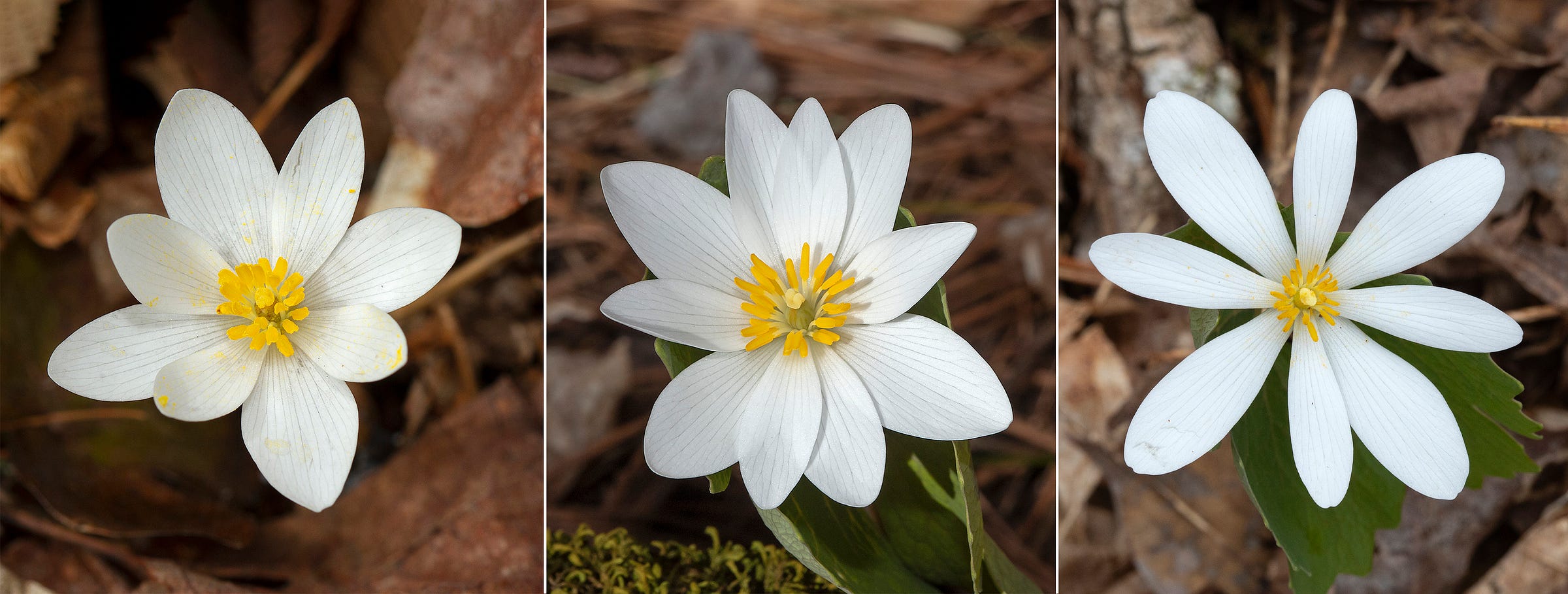
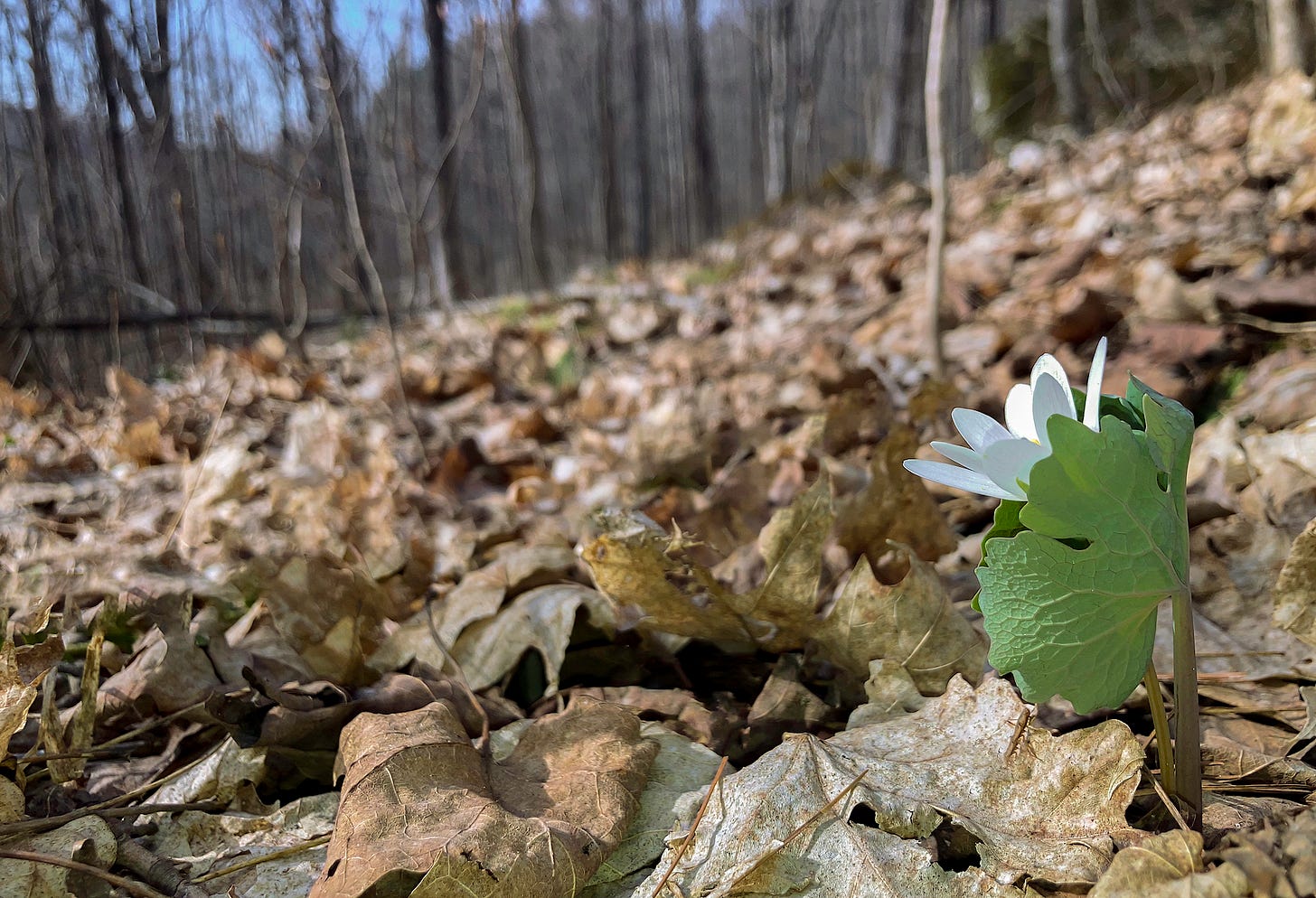


"A plant will not fix the world or put an end to my doubt and dread."
Maybe not, but I often think the love we feel for plants, birds, mountains, oceans etc is the only antidote for doubt and dread. So go ahead and have your fling with Bloodroot, Bryan, and keep sharing the love with all of us. We need it.
You had me from the first sentence, my friend. Absolutely 'love' this.
And for what it's worth, I really, really like you.